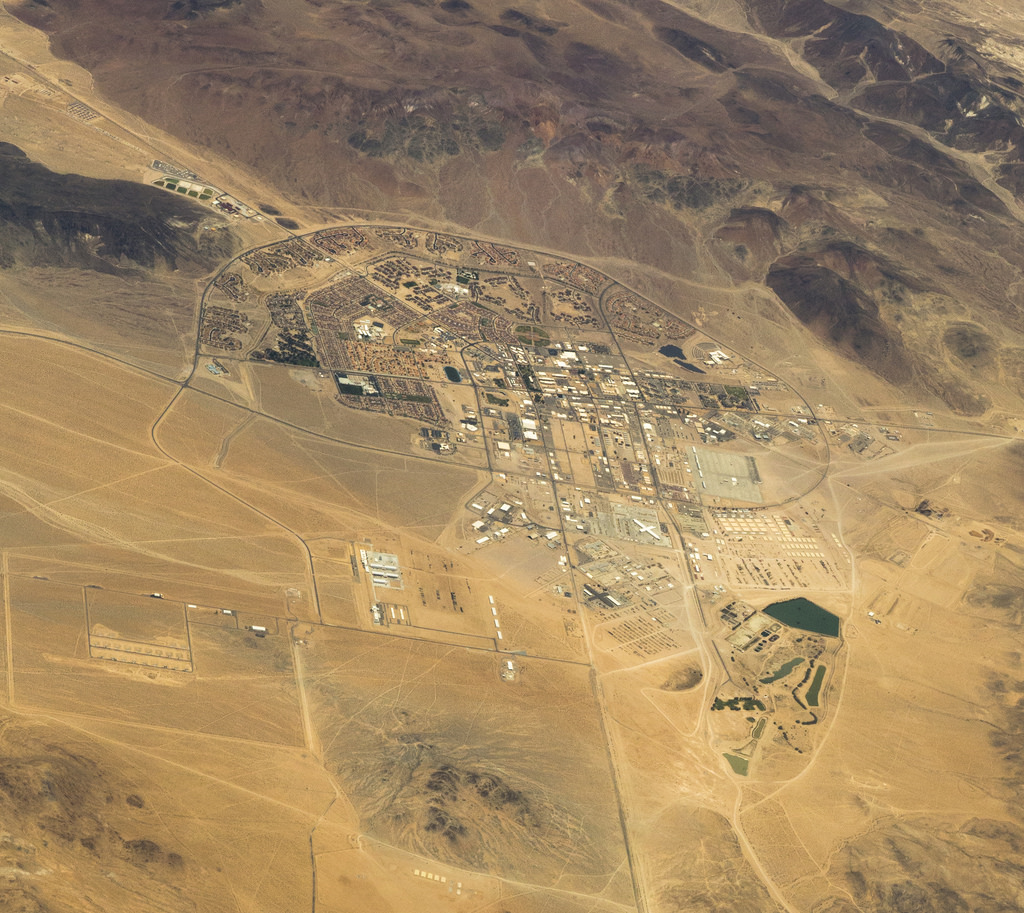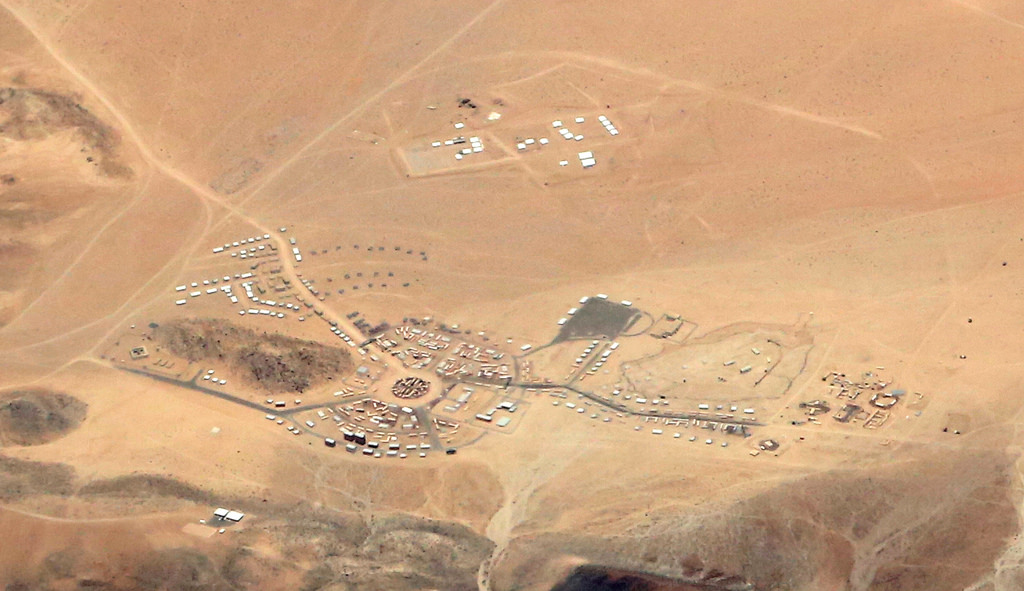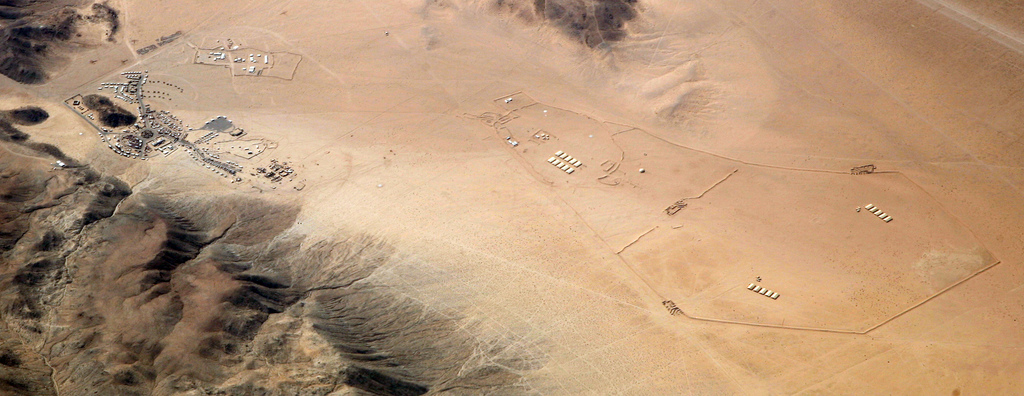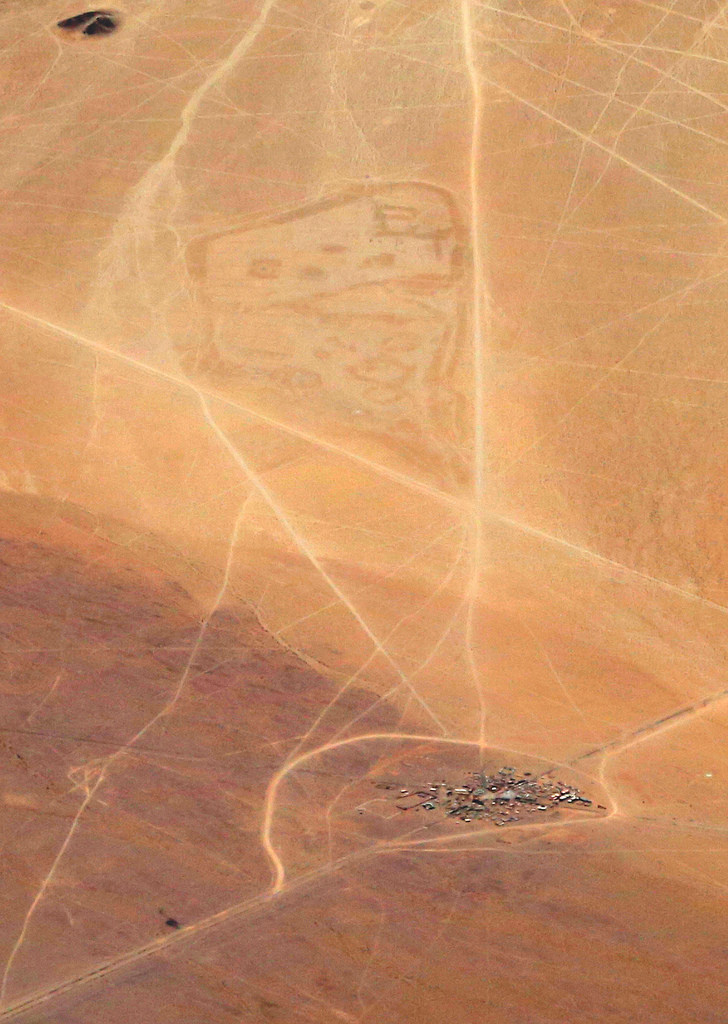I’ve been fascinated for years by what comes and goes at the Fort Irwin National Training Center—
—in the Mojave Desert, amidst the dark and colorful Calico Mountains of California, situated in the forbidding nowhere that stretches between Barstow and Death Valley.
Here and there, amidst the webwork of trails in the dirt left by tanks, jeeps and other combat vehicles, fake towns and other structures go up and come down. So, for example, here is Etrebat Shar, a fake town in an “artificial Afghanistan” that I shot earlier this month, on June 2:
And here is a broader view across the desert valley east of Fort Irwin itself:
Look to the right of the “town.” See that area where it looks like something got erased? Well, it did. I took the two shots above earlier this month, on June 2. Here’s a shot of the same scene on June 25, 2013:
Not only is the “town” a bit bigger, but there’s this whole other collection of walls and buildings, covering a far larger area, to the right, or east.
I also see in this shot that it was gone on December 8, 2014.
Now I’m fascinated by this town and the erased something-or-other nearby, which I also shot on June 2:
It appears to be “Medina Wasl,” which Wikipedia says is one of twelve towns built for desert warfare training:
One of the features of the base is the presence of 12 mock “villages” which are used to train troops in Military Operations in Urban Terrain (MOUT) prior to their deployment. The villages mimic real villages and have variety of buildings such as religious sites, hotels, traffic circles, etc. filled with foreign language speaking actors portraying government officials, local police, local military, villagers, street vendors, and insurgents. The largest two are known as Razish and Ujen, the closest located about 30 minutes from the main part of the post. Most of the buildings are created using intermodal containers, stacked to create larger structures, the largest village consists of 585 buildings that can engage an entire brigade combat team into a fight.
Now I’m slowly going through my other shots over the years to see if I can find Razish and Ujen… if they haven’t been erased.
It would be cool to hear from military folk familiar with Fort Irwin, or veterans who have worked or fought mock battles in those towns.





Leave a Reply